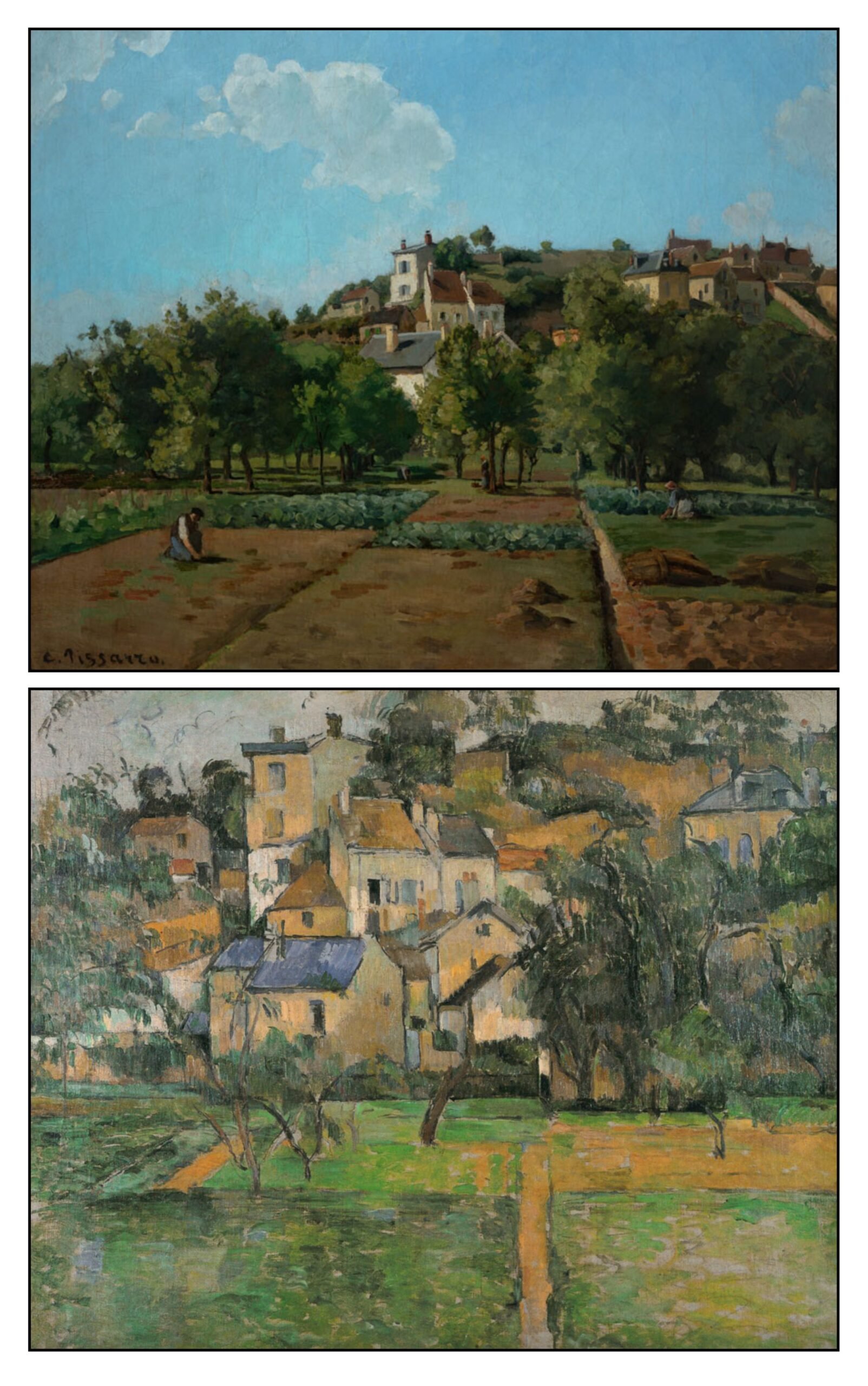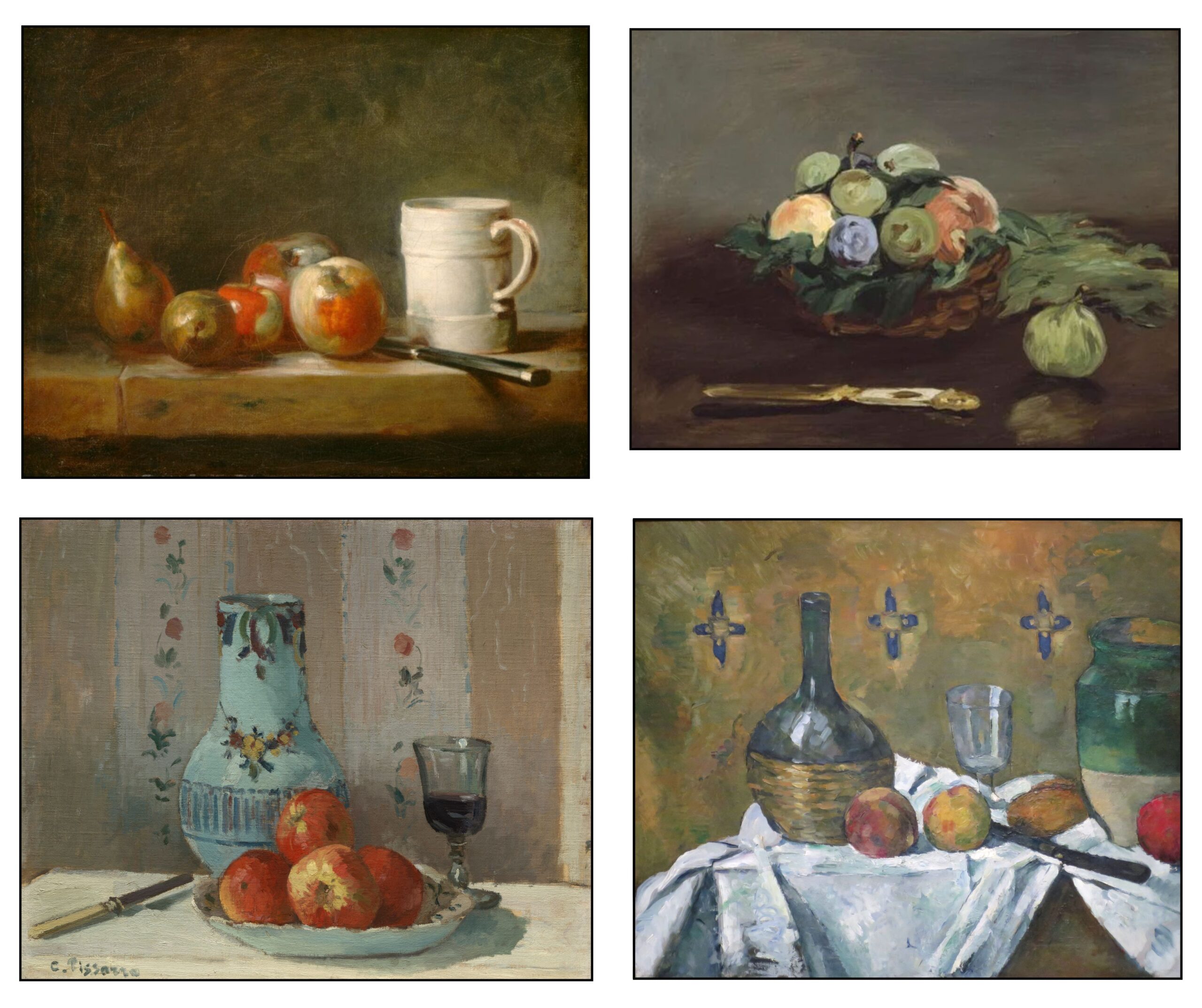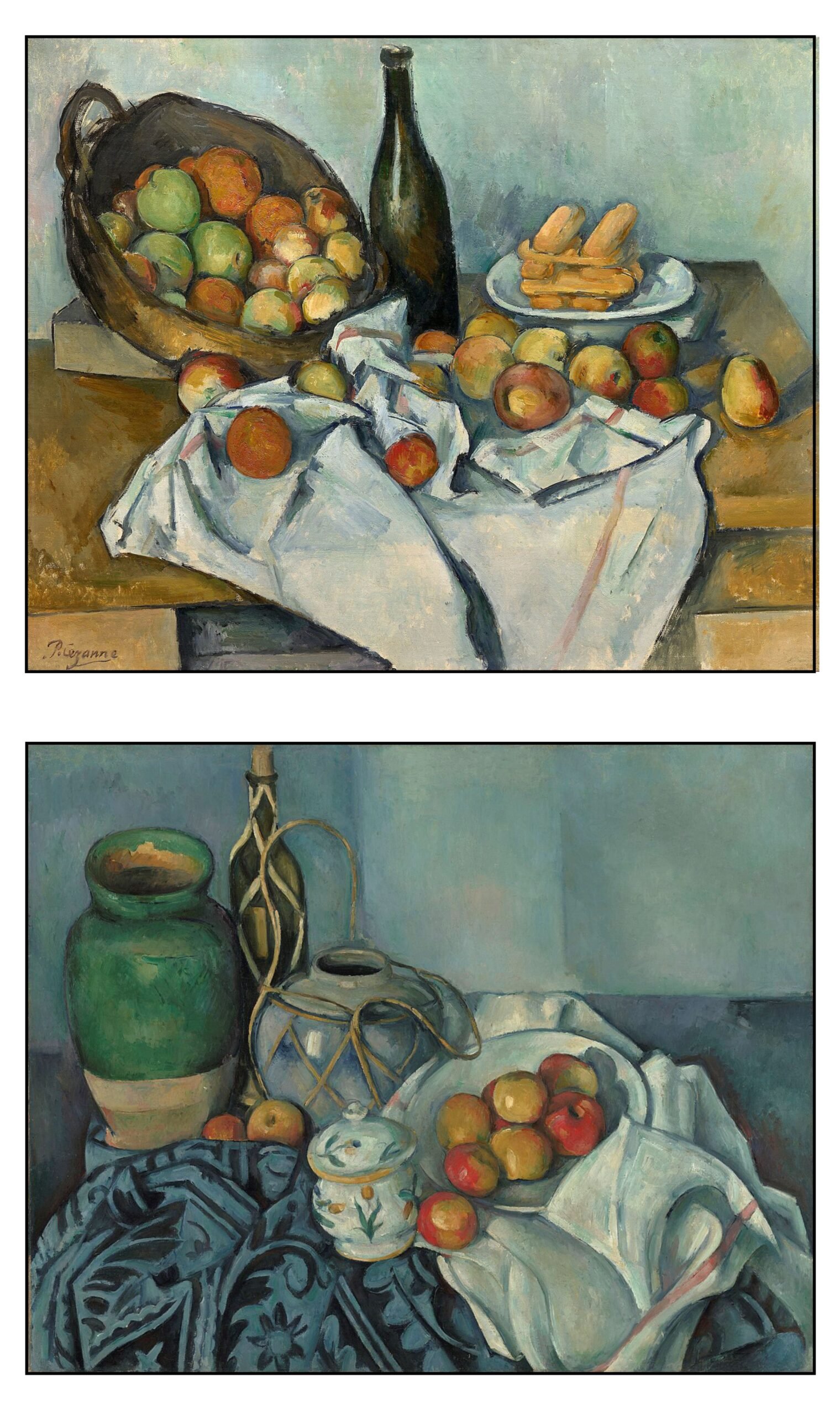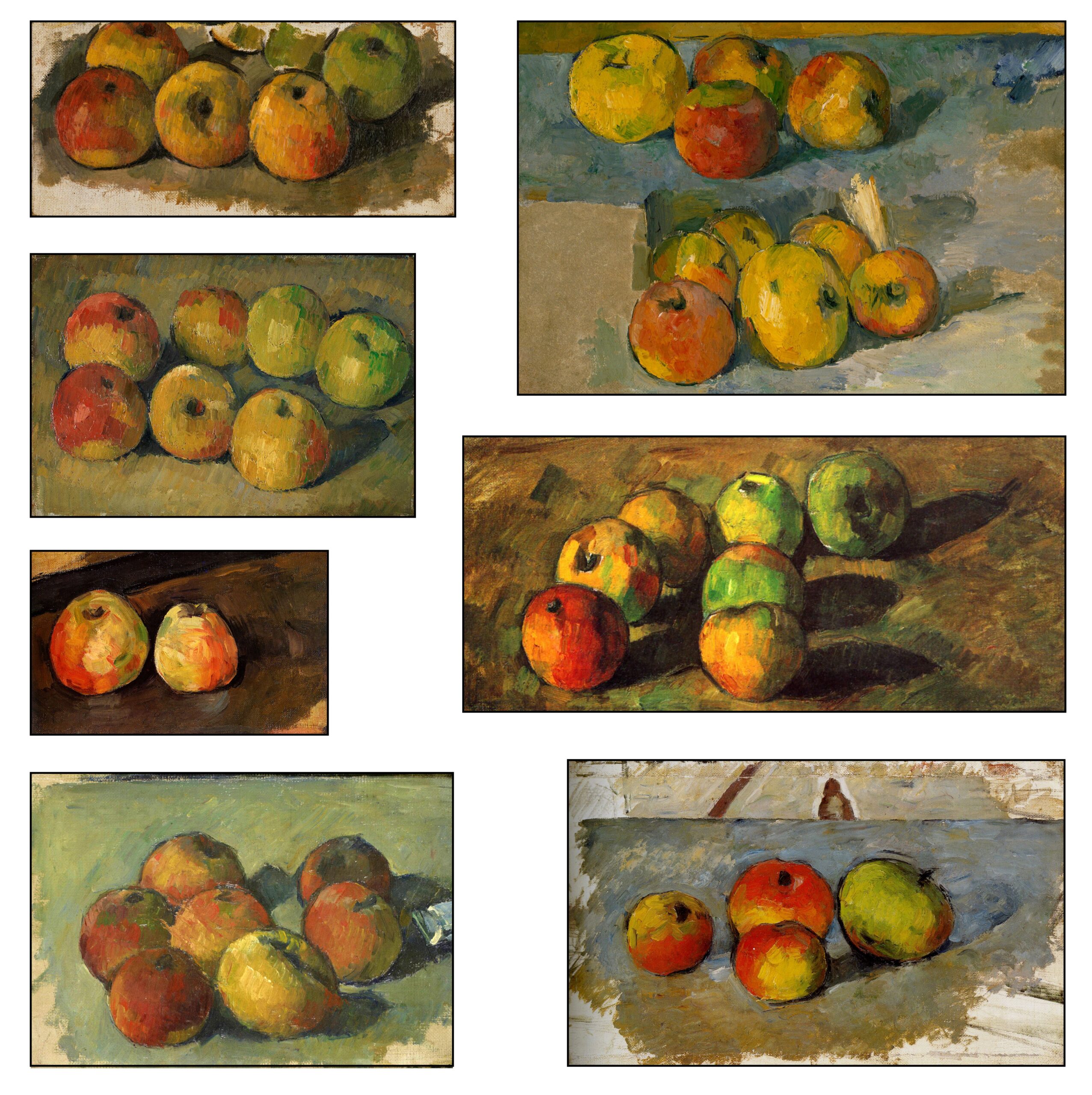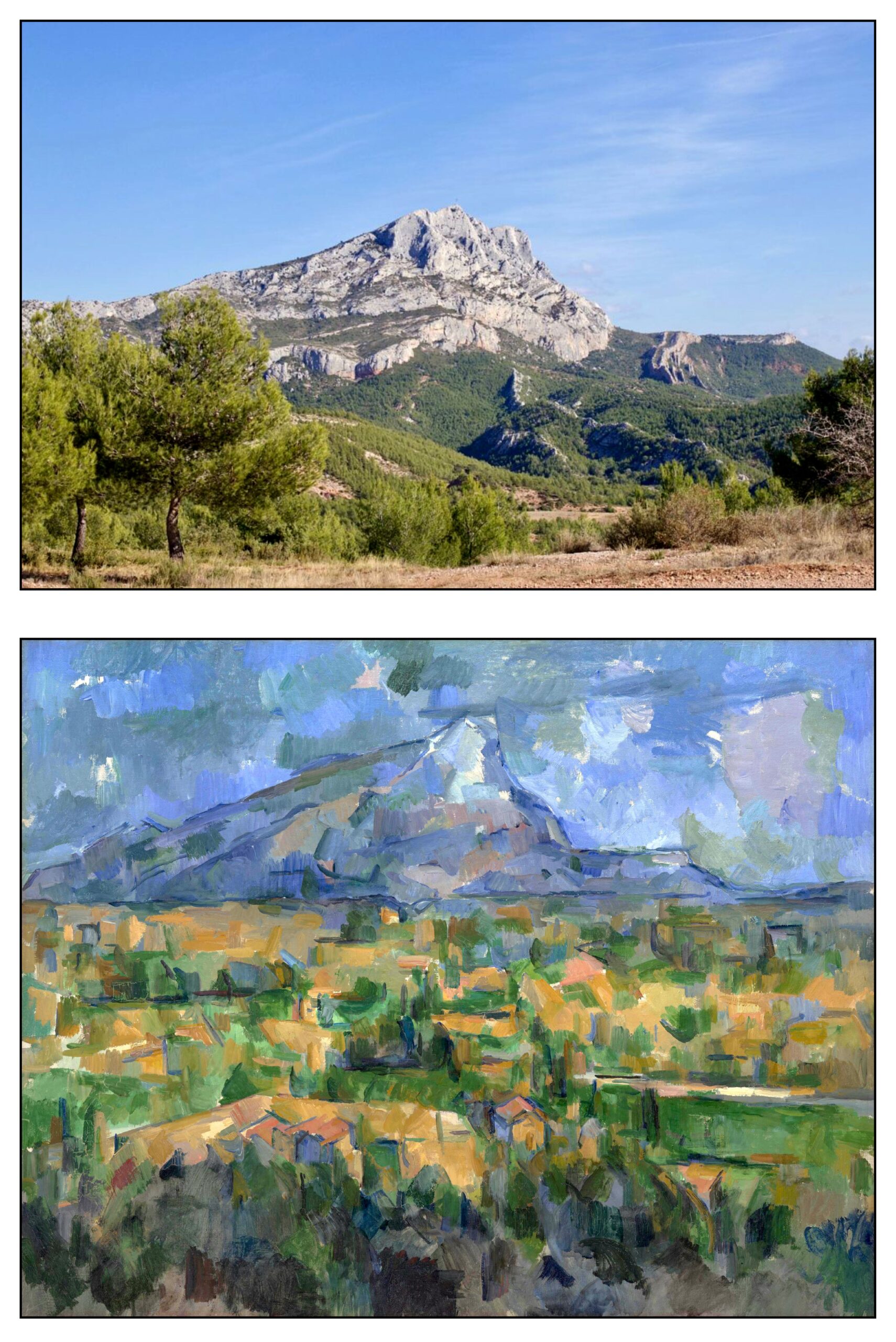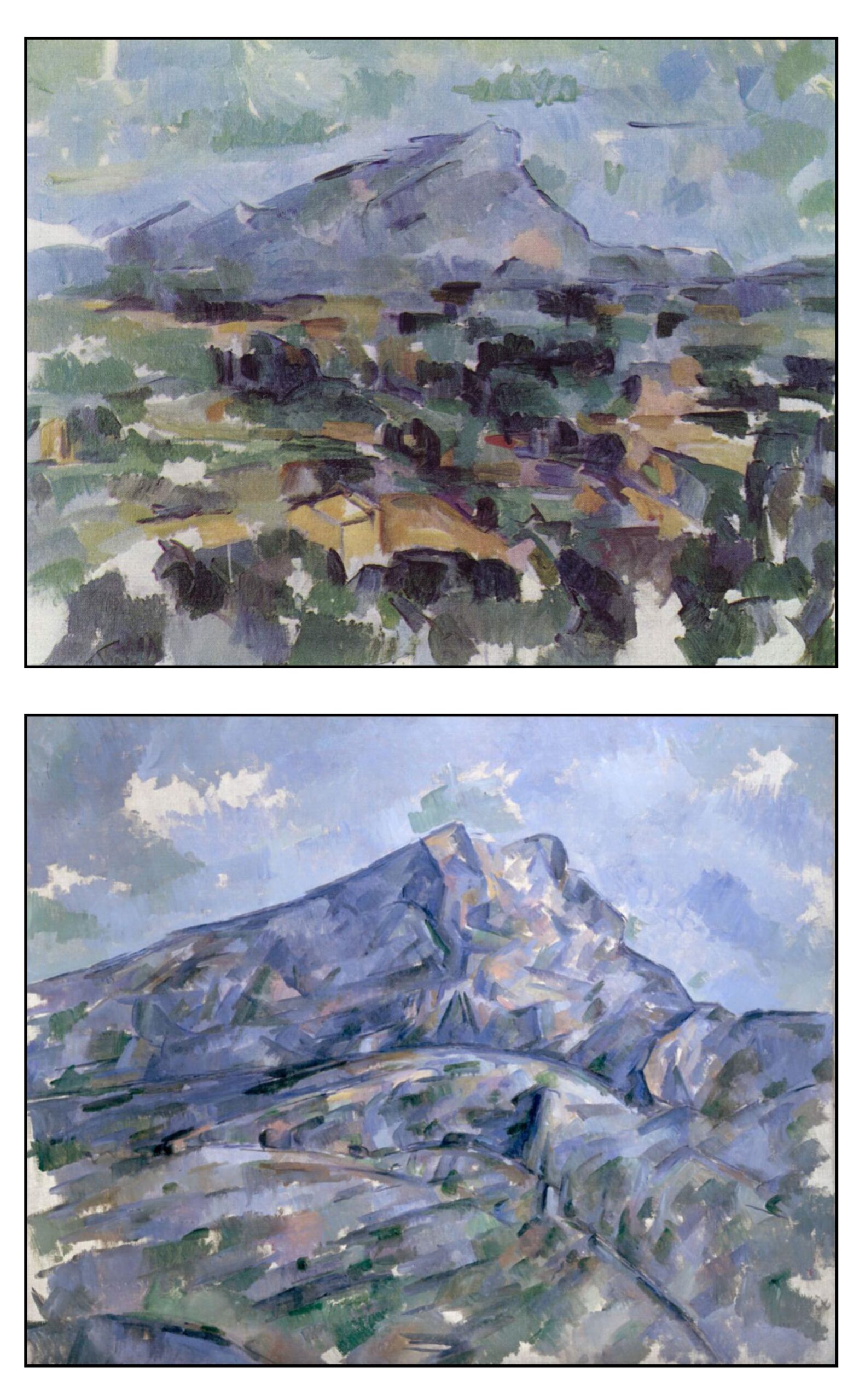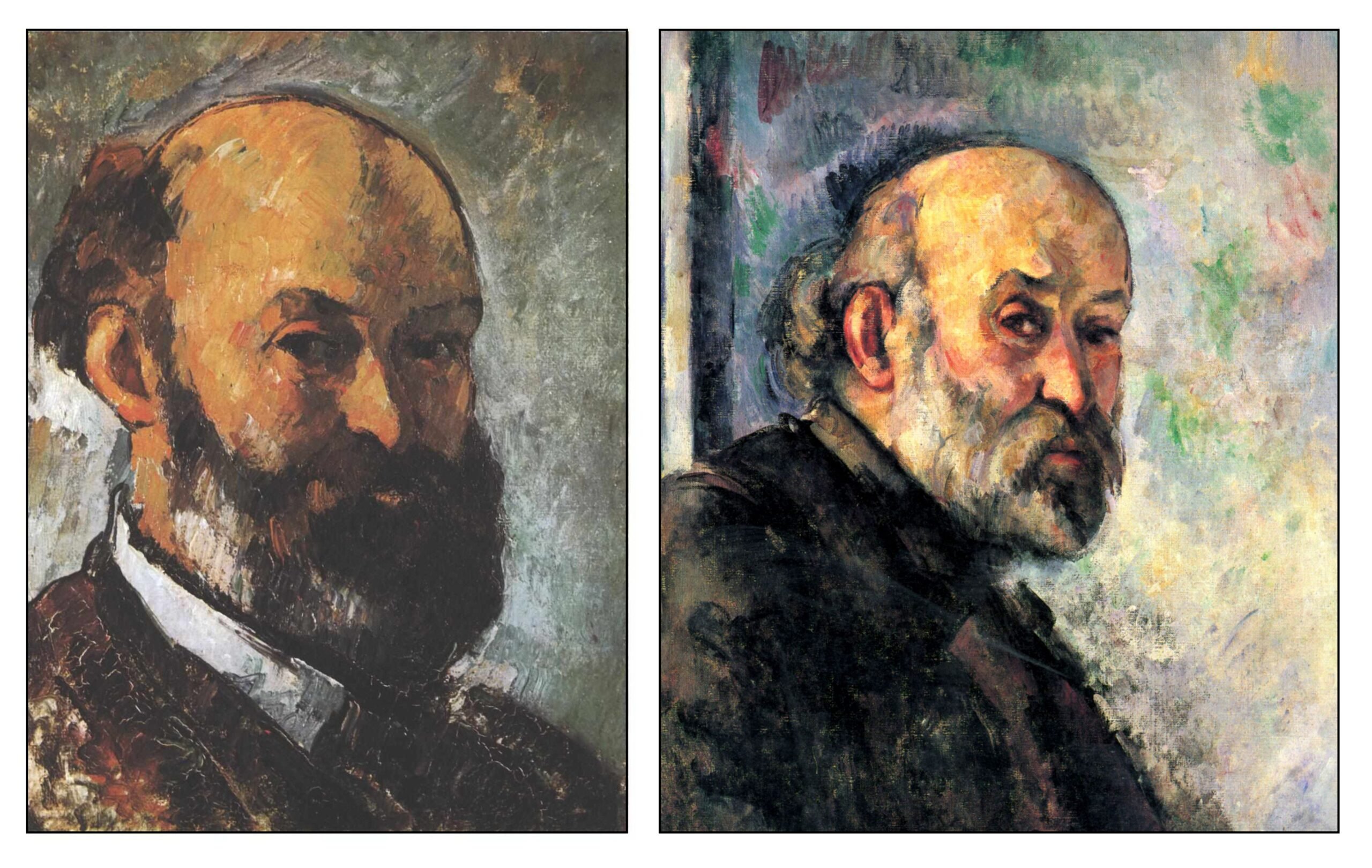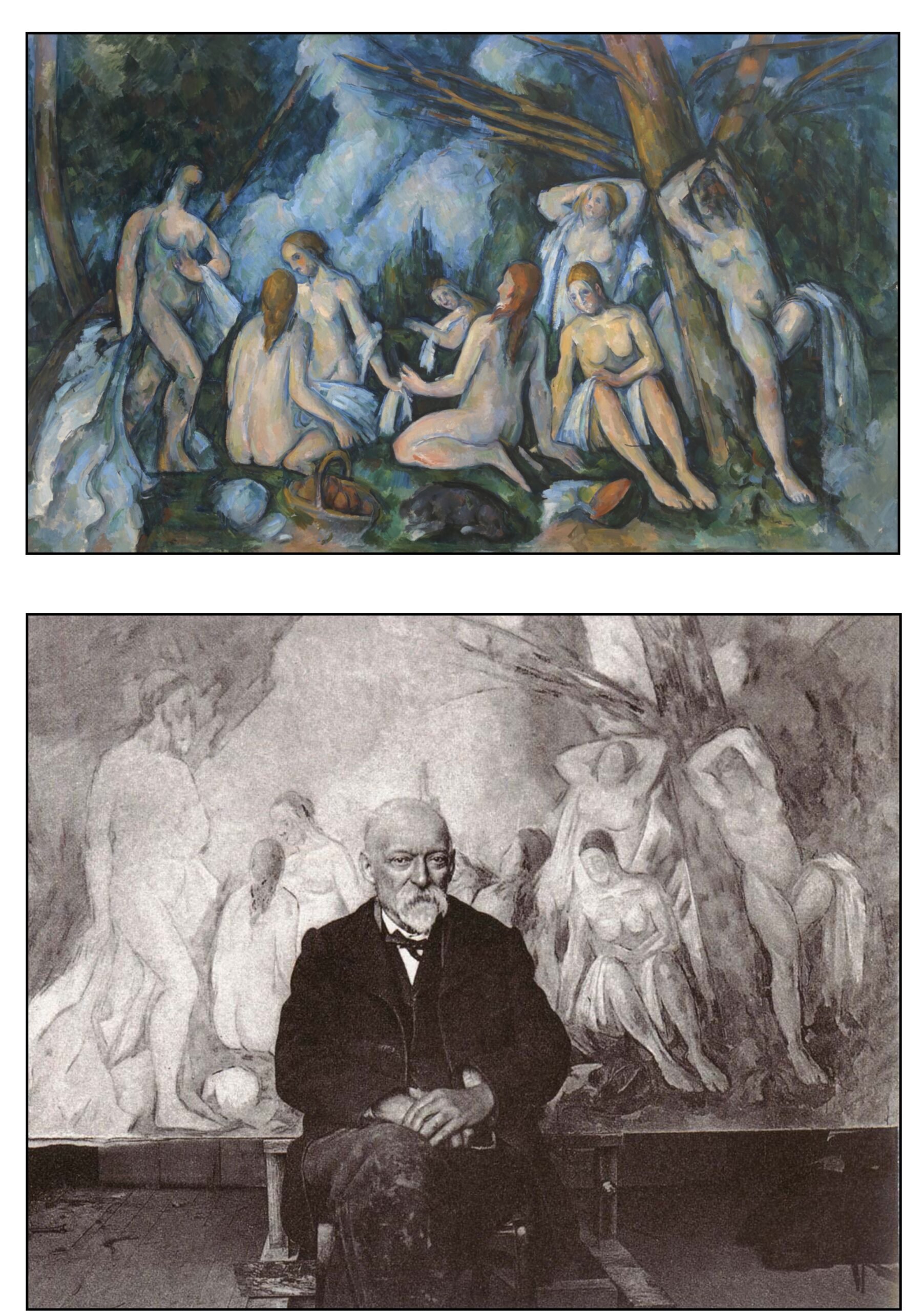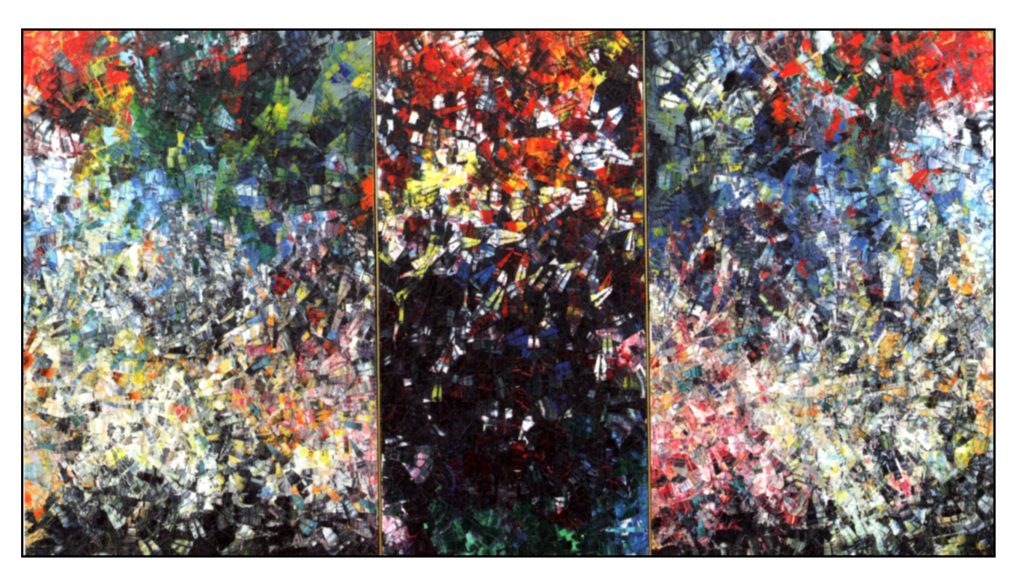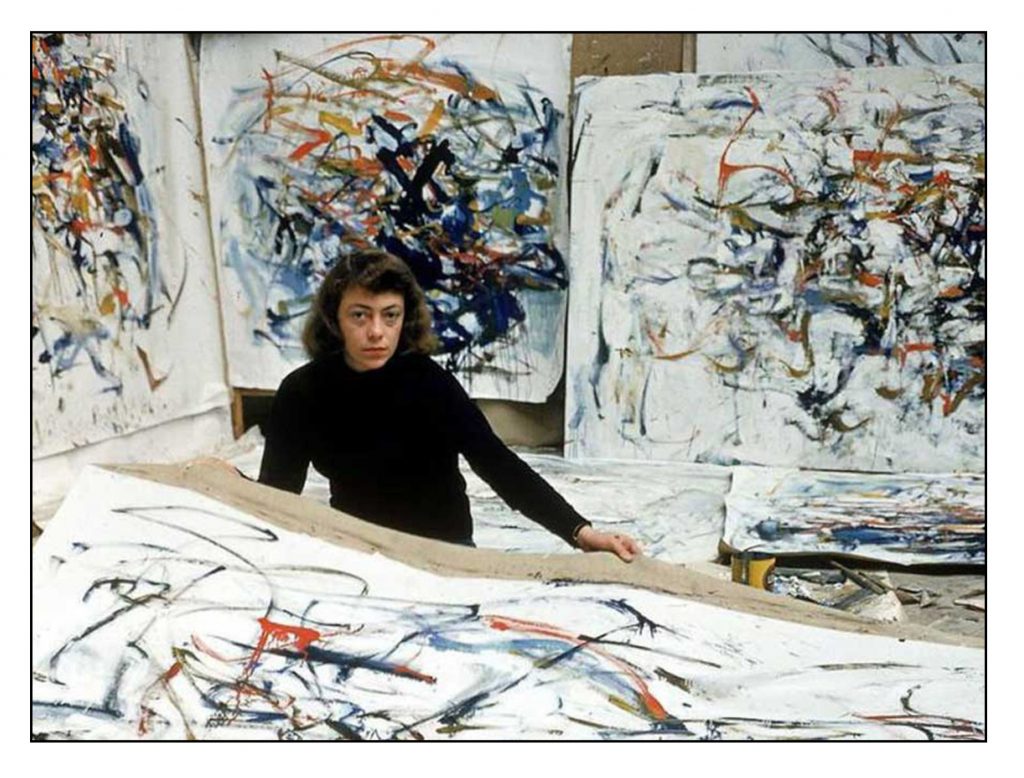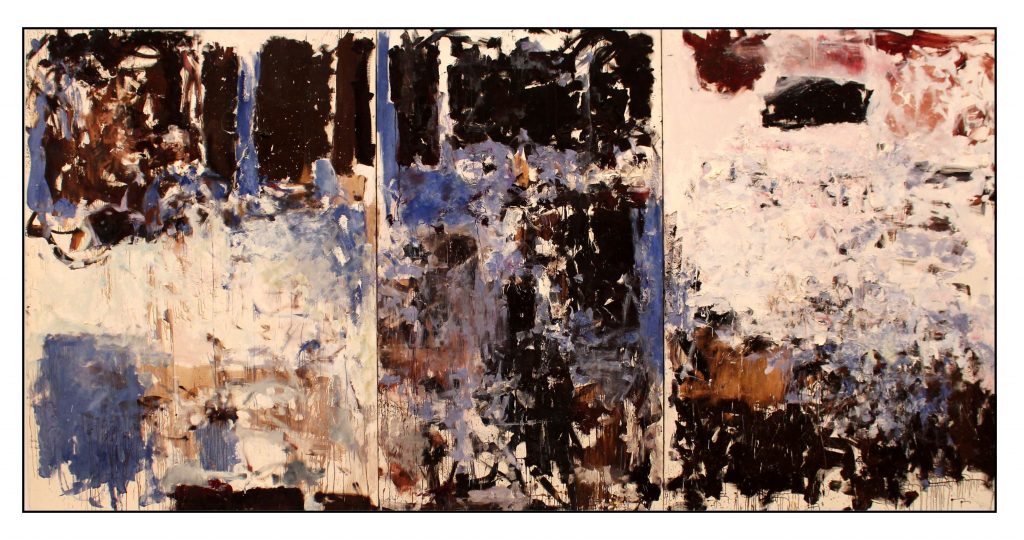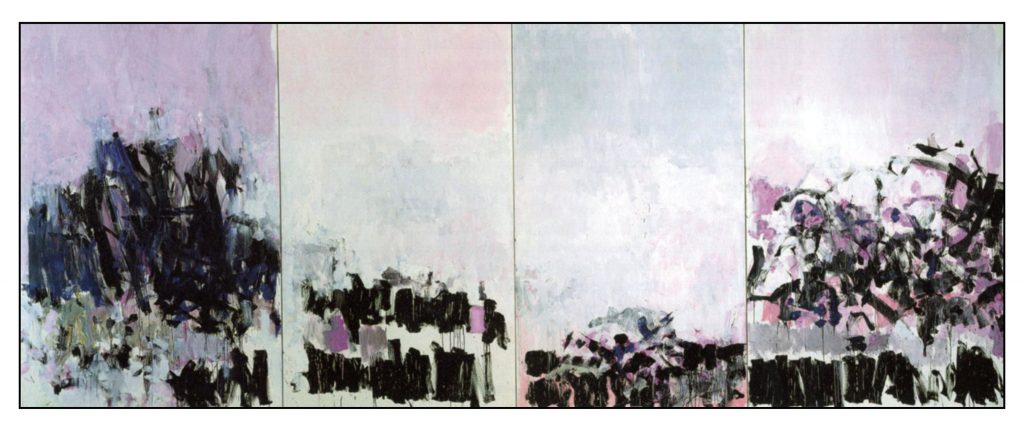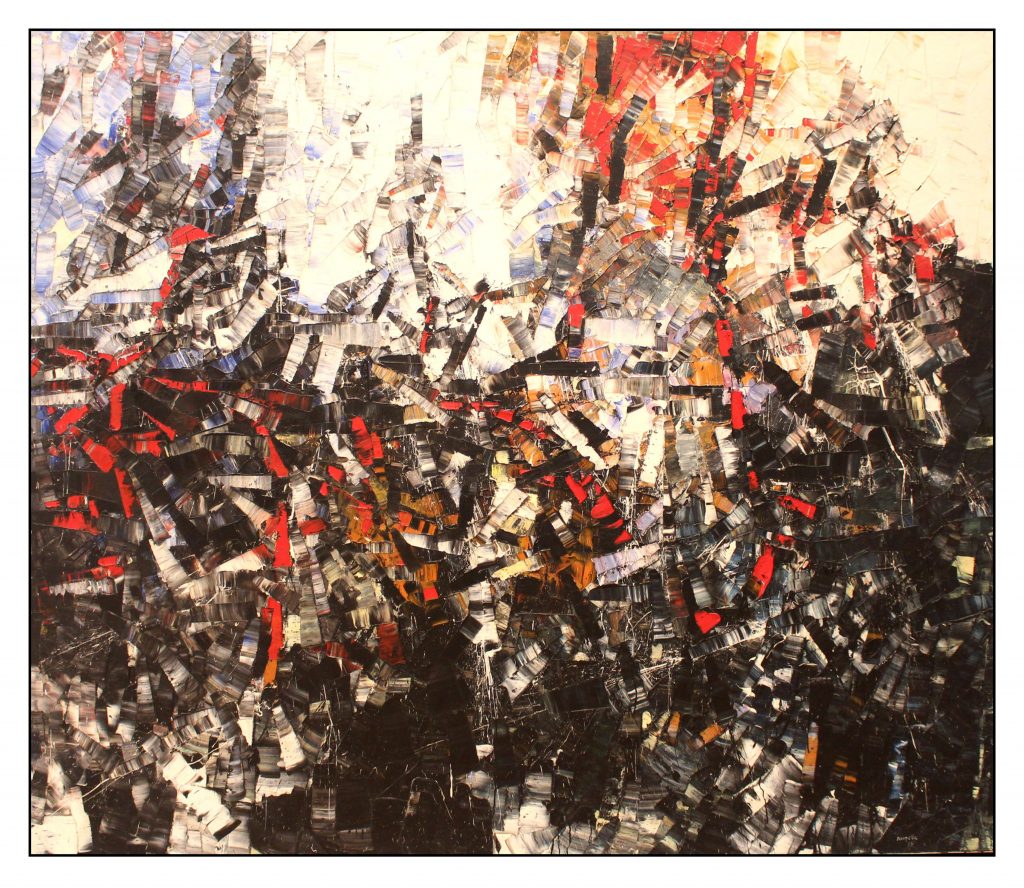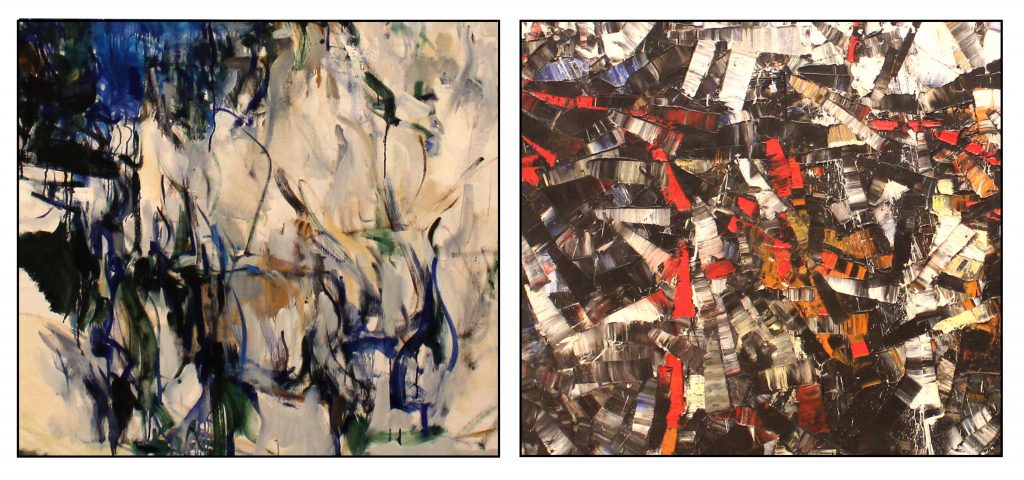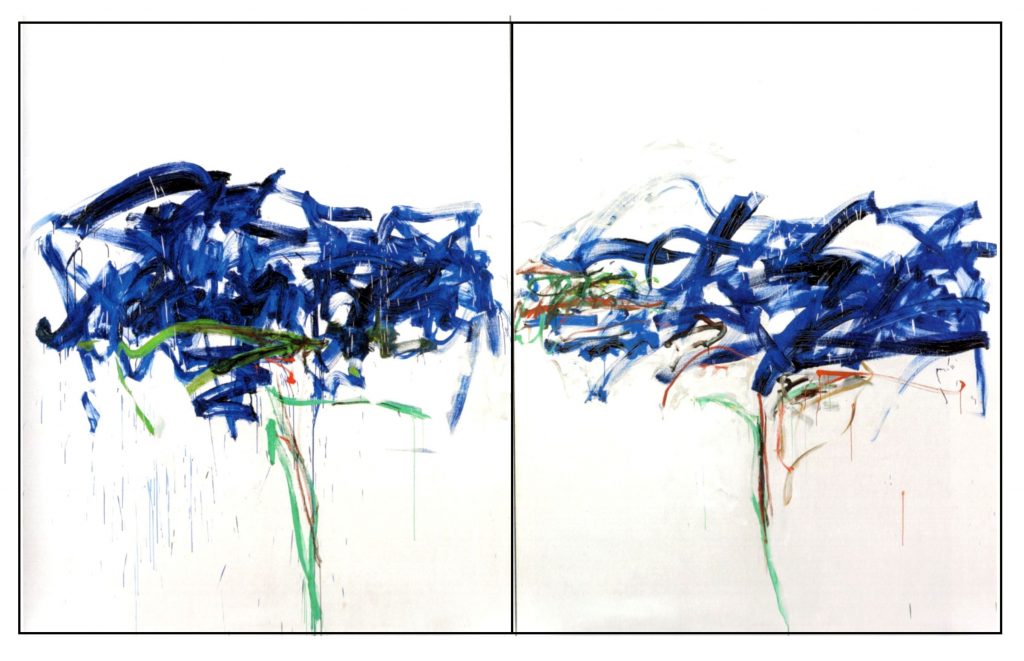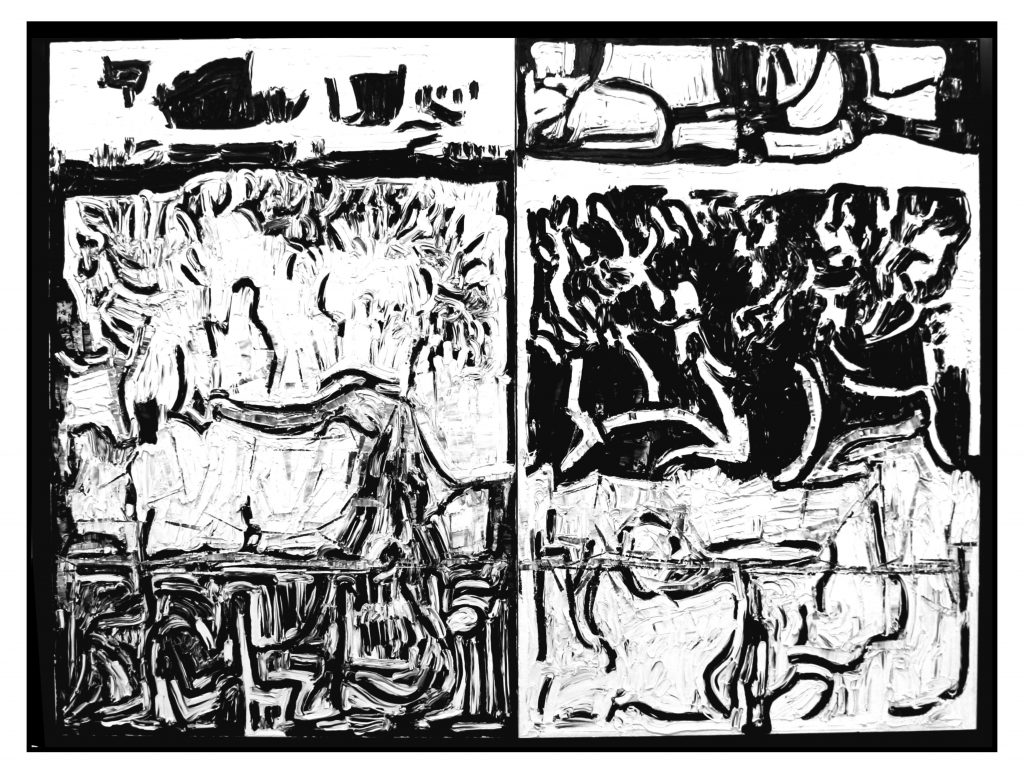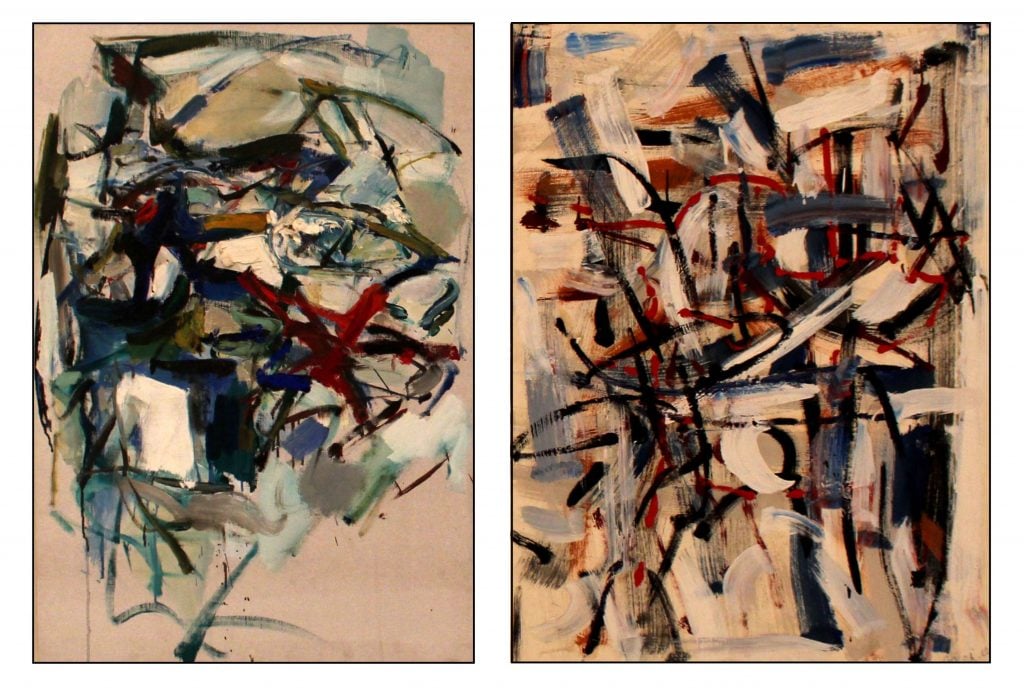Cézanne
Paul Cézanne (1839-1906) learned to experience nature with the vividness of the Impressionists but evolved his own individual style of painting. How he perceived the world was as important as the way it appeared. For most of his life he lived and painted in Aix-en-Provence. He had no students and his work became recognized only toward the end of his life. Nevertheless, many of the proponents of the modernist movement that began in the first decade of the 20th Century acknowledged Cézanne as their artistic father (Hook, 2021). This post comments on some of his paintings.
Early Life
Cézanne’s father, a successful businessman and banker in Aix-en-Provence, wanted his son to carry on the family’s banking business. However, Cézanne wished to become a painter and his father eventually gave in to his stubbornness. The young man came to Paris in 1861, took lessons in some of the painting studios and spent time studying and drawing in the Louvre (Schapiro, 1952; Danchev, 2010). He was impressed by the emotional force of Delacroix and intrigued by the iconoclasm of Manet. He later made his own versions of Manet’s Olympia and Le Déjeuner sur l’Herbe (both exhibited in 1863). He brooded and made paintings of rape and murder. His style was generally dark and heavy. He seemed destined to be just another angry young man without significant talent.
Friendship with Pissarro.
However, during his studies in Paris, Cézanne became friends with Camille Pissarro (1830-1903). Pissarro was older but both were outsiders: Cézanne was an unsophisticated provincial and Pissarro was a Jew from the island of St Thomas in the Caribbean. Pissarro had taken up the idea of painting directly from nature (en plein air), molding shapes in colors rather than defining them with outlines. He was one of the founding members of the Impressionists and exhibited with them from 1874 to 1886. He was full of enthusiasm for this new movement and loved to discuss its theories with his younger colleague. Despite their different personalities – Pissarro was gentle and congenial, Cézanne rough and unsocial – the two painters became fast friends, exchanging pencil portraits of each other (from around 1874, Pissarro on the left and Cézanne on the right.
 In the decade from 1871 to 1881, they often worked together in the environs of Paris (Pissarro, 2005). Pissarro lived in Pontoise, and for a while Cézanne lived in nearby Auvers. Sometimes Cézanne directly copied his colleague’s paintings, sometimes they worked simultaneously, and sometimes Cézanne would revisit a scene that Pissarro had painted before. Under the tutelage of Pissarro, Cézanne lost his youthful darkness and began to paint what he saw rather than what he imagined.
In the decade from 1871 to 1881, they often worked together in the environs of Paris (Pissarro, 2005). Pissarro lived in Pontoise, and for a while Cézanne lived in nearby Auvers. Sometimes Cézanne directly copied his colleague’s paintings, sometimes they worked simultaneously, and sometimes Cézanne would revisit a scene that Pissarro had painted before. Under the tutelage of Pissarro, Cézanne lost his youthful darkness and began to paint what he saw rather than what he imagined.
However, the two painters maintained their individual styes. Pissarro worked continuously adding tiny points of color to the canvas. His paintings vividly portray the atmosphere of a landscape, capture the color of its light, and accurately delineate its perspective. Cezanne would often spend a long time contemplating what he saw before adding paint to the canvas. His colors were perhaps brighter than reality and they were put on the canvas in “patches” rather than dots. His perspective never really fit a single point of view.
The following illustration shows two paintings of The Road at Pontoise. The upper painting by Pissarro was made in 1875 and the lower by Cézanne about a year later. Cézanne’s painting has a more limited field of view, his colors show more contrast and less definition, and his landscape contains no people.
Nancy Locke (2021) recounts the observations of a peasant who once watched the two painters at their easels in the countryside:
“M. Pissarro, en travaillant, piquait (et mon paysan faisait le geste), et M. Cézanne plaquait (autre geste).”
Selon cet observateur contemporain, Pissarro était plus susceptible de travailler avec un pinceau perpendiculaire à la toile, l’approchant avec un mouvement de tamponnage ou de piqûre, alors que Cézanne était plus enclin à se déplacer latéralement avec son pinceau ou son couteau à palette, travaillant ainsi dans le même plan que la toile.
[M. Pissarro, while working, “stung” (and my peasant made the gesture), and M. Cézanne “plastered” (another gesture).
According to this contemporary observer, Pissarro was more likely to work with a brush perpendicular to the canvas, approaching it with a dabbing or stabbing motion, whereas Cézanne was more inclined to move his brush or palette knife laterally, thus working in the same plane as the canvas. (my translation)]
Cézanne later described his method of painting to Joachim Gasquet. However, Gasquet wrote down these conversations long after Cézanne had died and the words are likely as much Gasquet as Cézanne:
[L]entement les bases géologiques n’apparaissent, des couches s’établissent, les grands plans de ma toile, j’en dessine mentalement le squelette pierreux. Je vois affleurer les roches sous l’eau, peser le ciel. Tout tombe d’aplomb. Une pâle palpitation enveloppe les aspects linéaires. Les terres rouges sortent d’un abîme. Je commence à me séparer du paysage, à le voir. Je m’en dégage avec cette première esquisse, ces lignes géologiques. La géométrie, mesure de la terre. Une tendre émotion me prend. Des racines de cette émotion monte la sève, les couleurs. Une sorte de délivrance. Le rayonnement de l’âme, le regard, le mystère extériorisé, l’échange entre la terre et le soleil, l’idéal et la réalité, les couleurs! Une logique aérienne, colorée,remplace brusquement la sombre, la têtue géométrie. Tout s’organise, les arbres, les champs, les maisons. Je vois. Par taches. L’assise géologique, le travail préparatoire, le monde du dessin s’enfonce, s’est écroulé comme dans une catastrophe. Un cataclysme l’a emporté, régénéré. Une nouvelle période vit. La vraie ! Celle où rien ne m’échappe, où tout est dense et fluide à la fois, naturel. Il n’y a plus que des couleurs, et en elles de la clarté, l’être qui les pense, cette montée de la terre vers le soleil, cette exhalaison des profondeurs vers l’amour. Le génie serait d’immobiliser cette ascension dans une minute d’équilibre, en suggérant quand même son élan. Je veux m’emparer de cette idée, de ce jet d’émotion, de cette fumée d’être au-dessus de l’universel brasier. Ma toile pèse, un poids alourdit mes pinceaux. Tout tombe. Tout retombe sous l’horizon. De mon cerveau sur ma toile, de ma toile vers la terre. Pesamment. Où est l’air, la légèreté dense? Le génie serait de dégager l’amitié de toutes ces choses en plein air, dans la même montée, dans le même désir. Il y a une minute du monde qui passe. La peindre dans sa réalité ! Et tout oublier pour cela. Devenir elle-même. Être alors la plaque sensible. Donner l’image de ce que nous voyons, en oubliant tout ce qui a paru avant nous. (Gasquet, 1921, pp. 136-137)
[S]lowly geographical foundations appear, the layers, the major planes form themselves on my canvas. Mentally I compose the rocky skeleton. I can see the outcropping of stones under the water; the sky weighs on me. Everything falls into place. A pale palpitation envelops the linear elements. The red earths rise from an abyss. I begin to separate myself from the landscape, to see it. With the first sketch, I detach myself from these geological lines. Geometry measures the earth. A feeling of tenderness comes over me. Some roots of this emotion raise the sap, the colors. It’s a kind of deliverance. The soul’s radiance, the gaze, exteriorized mystery are exchanged between earth and sun, ideal and reality, colors! An airborne, colorful logic quickly replaces the somber, stubborn geography. Everything becomes organized: trees, fields, houses. I see. By patches: the geographical strata, the preparatory work, the world of drawing all cave in, collapse as in a catastrophe. A cataclysm has carried it all away, regenerated it. A new era is born. The true one! The one in which nothing escapes me, where everything is dense and fluid at the same time, natural. All that remains is color, and in color, brightness, clarity, the being who imagines them, this ascent from the earth toward the sun, this exhalation from the depths toward love. Genius would be to capture this ascension in a delicate equilibrium while also suggesting its flight. I want to use this idea, this burst of emotion, this smoke of existence above the universal fire. My canvas is heavy, a heaviness weighs down my brushes. Everything drops. Everything falls toward the horizon. From my brain onto my canvas, from my canvas toward the earth. Heavily. Where is the air, the dense lightness? It would take genius to discover the amity of all these things in the open air, in the same ascent, in the same desire. A minute of the world goes by. To paint it in its reality! And to forget every-thing else. To become reality itself. To be the photographic plate. To render the image of what we see, forgetting everything that came before. (Cochran translation in Doran and Cochran, 2001)
Je peins. Par taches. The French word tache most commonly denotes a spot, stain or blemish. In painting it means a patch of color. With these patches Cézanne was able to portray on the canvas what he perceived. Pissarro (2005), the grandson of the painter, remarked about how the French word is close to touche (touch) and that this brings to mind how touch is both a sensation and an action. Cézanne’s painting was an active participation in his experience, not so much a representation as a recreation of reality.
Over the years Cézanne began to distance himself from the Impressionists (Shiff, 1984). Verdi (1992) called him the “reluctant impressionist.” As well as heightening his color contrasts, he portrayed space quite differently. Each part of the painting existed on its own plane, and these planes intersected to form the structure of the scene. Cézanne was more interested in the underlying form of what he saw rather than its immediate appearance. His differentiation from the impressionists is visible below in two paintings made in the gardens of the Hermitage at Pontoise: Pissarro’s from 1867, and Cézanne’s from 1881. After 1881 Cézanne retired to Provence only coming to Paris occasionally.
Still Lifes
During his association with Pissarro in the 1870s, Cézanne developed his own individual technique for portraying still lifes. French painters had followed the Dutch in their enthusiasm for still life. The illustration below shows paintings by Chardin (1764), Manet (1864), Pissarro (1872) and Cézanne (1874). All contain a paring knife. In Cézanne’s painting, the objects do not simply exist. The space tips upward. The objects seem to move towards the viewer, but are restrained by the rumpled tablecloth.
Multiple points of view were characteristic of Cézanne’s later still lifes. The following figure shows his 1890 painting of The Kitchen Table as analyzed by Erle Loran (1943). The diagram shows that the objects are viewed from two main heights (I and II on the left); the lower point of view is then located either directly in front or on the right (Ia and IIb). Some of the objects tilt as though they are about to fall (D and E) whereas others stand upright (F). The tabletop on the left is lower than on the right (ABC). These problems of perspective are not due to clumsiness. Cézanne considered each section of the painting by itself and then pieced the scene back together. Such an approach to reality was to become the driving force of Cubism.
The following illustration shows two more of Cézanne’s still lifes. In the upper painting – The Basket of Apples (1893) the bottle leans to the left, the biscuits tilt upward, and the table top again has two different heights. This instability becomes even more marked in the lower painting of Still Life with Apples (1895), about which T. J. Clark (2022, p 75)
The whole array … is disturbed and unstable (those spilling red spheres, that tipping plate, that earthquake landscape of blue and white cloth) yet composed and crystalline at the same time. And both the orderliness and the disturbance can strike us as features of seeing and features of manufacture – inventions, impositions, flashes of grim wit. Take the crisp fold at the top of the tablecloth, continuing the dark line of the dado [lower portion of a wall]. Or the whole brilliant hard decisiveness of the made pattern – made by machine and then by Cezanne the re-folder – on the blue-and-black drape. Or the anti-colour of the ice-block wall. </p>
The spatial instability of the paintings can make the viewer uneasy. The uncertainty of the artist is palpable. The critic Gustave Geffroy was perhaps the first to mention this inquiétude in a review of Cézanne’s 1895 exhibition:
L’inquiétude de l’artiste l’a dominé. Cézanne n’en a pas moins raconté sa sensation profonde au spectacle de l’univers. Il importe peu que sa personnalité ait pris, pour s’exprimer, telle forme plutôt que telle autre. Regrettons qu’il n’ait pas doté son pays et son temps de l’oeuvre grandiose qui était en lui. Mais son individu ne subit de ce regret aucune déperdition, puisqu’il est présent, et bien présent, par toutes ces oeuvres où se mêlent, comme on ne l’a jamais vu davantage peut-être, la réflexion et la spontanéité. (Geffroy, 1900, p 218). </p>
[The anxiety (unease, disquiet) of the artist overcame him. Cézanne nevertheless recounted his deep experience of the universe. It matters little that his personality took, in order to express itself, one form rather than another. We are sorry that he did not endow his country and his time with the great work that was in him. But his achievement suffers no loss from this regret, since he is present, and very present, in all these works which mingle, more that we have ever seen before, reflection and spontaneity. (my translation)] </p>
Cézanne’s Apples
At school in Aix, Cézanne had once come to the defence of the young Emile Zola who was being bullied by older students. The next day Zola brought Cézanne a basket of apples (Schapiro, 1968). The two became fast friends and Cézanne’s apples became a recurring motif in his paintings, many of which simply show a group of apples on a surface (Leca, 2014). As illustrated below, each apple is defined by its colors. There are no outlines, only shadows. They represent things as they exist unto themselves (Armstrong, 2018). In his poem To an Artist, Seamus Heaney (1984) describes “his coercion of the substance from green apples”
Mont Sainte Victoire
After he returned to Provence, Cézanne began a series of paintings depicting the mountain to the east of Aix-en-Provence: Mont Sainte Victoire. The following illustration shows two paintings from the mid 1890s, the upper one now in the Barnes Collection in Philadelphia and the lower in the Courtauld Collection in London.
As the years went on the depictions of the mountain became more abstract. The color patches expanded and the structure simplified. The following illustration shows a modern photograph of the mountain together with Cézanne’s 1904 painting:
William Wilson commented on the multiplicity of the depiction:
the deep space represented in Cézanne’s paintings is not the space of historical events; he has altered that space, bringing the distant nearer, and pushing the near back. As we look towards Mont Sainte-Victoire it is brought towards us, but Cézanne doesn’t show the cross that had been erected on it. Anything might happen in historical space, but Cézanne did not want that; he wanted painting to be about what was happening, when what was happening was an experience of successive spontaneous visual sensations which include a feeling of earlier and later, of before and after, along with now. Looking at a landscape by Cézanne, it is as though in that space we would go a few yards to the left, some yards back, some more yards upward, and several yards later. (Wilson, 1988, p 193)
As the years went by, the paintings of Mont Sainte Victoire became more monumental. The following illustration shows two late depictions.
The paintings have become independent of their source, creations in their own right. The following is a statement by Cézanne as reported (much later) by Gasquet. It is likely exaggerated. The comment that le paysage se pense en moi does not ring true as something that Cézanne would have said, but it does depict the way that the critics and painters began to consider his achievement:
L’art est une harmonie parallèle à la nature. Que penser des imbéciles qui vous disent: le peintre est toujours inférieur à la nature! Il lui est parallèle. S’il n’intervient pas volontairement… entendez-moi bien. Toute sa volonté doit être de silence. Il doit faire taire en lui toutes les voix des préjugés, oublier, oublier, faire silence, être un écho parfait. Alors, sur sa plaque sensible, tout le paysage s’inscrira. Pour le fixer sur la toile, l’extérioriser, le métier interviendra ensuite, mais le métier respectueux qui, lui aussi, n’est prêt qu’à obéir, à traduire inconsciemment, tant il sait bien sa langue, le texte qu’il déchiffre, les deux textes parallèles, la nature vue, la nature sentie, celle qui est là… (il montrait la plaine verte et bleue) celle qui est ici… (il se frappait le front) qui toutes deux doivent s’amalgamer pour durer, pour vivre d’une vie moitié humaine, moitié divine, la vie de l’art, écoutez un peu… la vie de Dieu. Le paysage se reflète, s’humanise, se pense en moi. Je l’objective, le projette, le fixe sur ma toile. (Gasquet, 1921, pp. 131-132)
[Art is a harmony parallel to nature. What would you think of idiots who would tell you, the painter is always inferior to nature! They are parallel, if the artist doesn’t intentionally intervene … hear me well. His entire will must be silent. He must silence all prejudice within himself. He must for-get, forget, be quiet, be a perfect echo. Then the full landscape will inscribe itself on his photographic plate. In order to fix it on his canvas, to exteriorize it, his craft comes into action. But it must be a respectful craft which, itself also, is ready only to obey, to translate unconsciously so long as it knows its language well, the text it deciphers, these two parallel texts: nature seen and nature felt, the nature which is out there … (he indicates the blue and green plain) and the nature which is in here … (he taps himself on the forehead) both of which must unite in order to endure, to live a life half human, half divine, the life of art, listen a little … the life of God. The landscape is reflected, becomes human, and becomes conscious in me. I objectify it, project it, fix it on my canvas. (Cochran translation)
First Recognition
Cézanne bought his paint supplies from Julien Tanguy (the same Père Tanguy that was painted by Vincent Van Gogh) in Paris, and left some paintings with him for possible sale. When Tanguy died in 1894, the dealer Ambroise Vollard obtained some of Cézanne’s paintings from the sale of his estate. He then contacted Cézanne, and arranged for his first solo exhibition in 1895. Cézanne suddenly became a success.
Younger painters found inspiration in the vividness and the uncertainty of Cézanne’s still lifes. In 1900 Maurice Denis painted his Hommage à Cézanne showing Cézanne’s 1880 painting Still Life with Compotier being admired by artists and critics. The persons illustrated are from left to right: Odilon Redon, Edouard Vuillard, André Mellario (in top hat), Ambroise Vollard (behind the easel), Maurice Denis, Paul Ranson, Ker-Xavier Roussel, Pierre Bonnard (with pipe) and Marthe Denis.
Several portraits were included in Cézanne’s first exhibition (Elderfield, 2017). Below are shown two 1891 portraits of Madame Cézanne (Marie-Hortense Fiquet, his one-time model and mother of his son). The portraits lack the fine detail that characterized the paintings of classical artists. Yet facial perception depends more on general form than on details, and Cézanne’s paintings grasp this form. The portraits have a monumentality – as if the sitter was as important to the painter as his beloved Mont Sainte Victoire.
The poet Rainer Maria Rilke was impressed by the portrait on the left:
A red, upholstered low armchair has been placed in front of an earthy-green wall in which a cobalt-blue pattern (a cross with the center left out) is very sparingly repeated; the round bulging back curves and slopes forward and down to the armrests (which are sewn up like the sleeve-stump of an armless man). The left armrest and the tassel that hangs from it full of vermilion no longer have the wall behind them but instead, near the lower edge, a broad stripe of greenish blue, against which they clash in loud contradiction. Seated in this red armchair, which is a personality in its own right, is a woman, her hands in the lap of a dress with broad vertical stripes that are very lightly indicated by small, loosely distributed flecks of green yellows and yellow greens, up to the edge of the blue-gray jacket, which is held together in front by a blue, greenly scintillating silk bow. In the brightness of the face, the proximity of all these colors has been exploited for a simple modeling of form and features: even the brown of the hair roundly pinned up above the temples and the smooth brown in the eyes has to express itself against its surroundings. It’s as if every part were aware of all the others—it participates that much; that much adjustment and rejection is happening in it; that’s how each daub plays its part in maintaining equilibrium and in producing it: just as the whole picture finally keeps reality in equilibrium. (Rilke, 1907, translated 1985 pp 70-71)
The following illustration shows Cézanne’s portrait of the critic Gustave Geffroy (1896) seated at a desk that expands irrationally toward the reader and the unfinished eyeless portrait of the dealer Ambroise Vollard (1899).
Cézanne produced many self-portraits. Those illustrated below are from 1880, when he had decided on his way of painting, and from 1895, when he had attained success but had begun to doubt his ability to make it significant.
The Bathers
Cézanne’s fondest memoires of childhood were the times he spent swimming with Zola and other friends in the rivers and lakes near Aix-en-Provence. Throughout his life he painted scenes of bathers (Krumrine, 1989; Garb1996)). In the early years of the 20th Century, he worked on several large paintings of bathers which were left unfinished at the time of his death in 1906. He did not use models. His figures were based on drawings he had made as a student in Paris, on photographs and on prints of the old masters (Verdi, 1992, Chapter 6). The following illustration shows a painting of male bathers from 1894, and one of the large paintings of female bathers unfinished at his death:
The very incompleteness of the late works became part of their appeal. Cézanne was attempting to find humanity’s lost innocence. His inability was later interpreted as reflecting the difficulty of perceiving a world that may not be where we wish to live. This conflict between consciousness and reality became a major part of the later philosophy of existentialism – the search for meaning in a meaningless world. Merleau-Ponty remarked in his 1948 essay on Cézanne’s Doubt
The meaning of what the artist is going to say does not exist anywhere— not in things, which as yet have no meaning, nor in the artist himself, in his unformulated life.
The artist must attempt to create this meaning in his work (Alsdorf, 2010; Rutherglen, 2004). The following is from the poem Morning in the Studio: Les Grandes Baigneuses by Maitreyabandhu (2019).
They were like dinosaurs in the swaggering green,
insecurely sexed with their hands above their heads.
He wanted earthed Etruscan statuary; he wanted
voluptuaries of the sun, but some were missing limbs
or had their heads blown off, others had broken wrists
and severed fingers. They were like crippled monkeys
under cathedral trees: they were the century to come.
The final illustration shows Emile Bernard’s 1904 photograph of Cézanne in front of one of his unfinished paintings of Les Grandes Baigneuses. The detail on the left of the painting (now in the Barnes Collection) was later changed but the painting remained incomplete at the time of his death.
The Creative Artist
Medina (1995, pp 122-125) remarks on how a Cézanne’s painting becomes independent of the experience that led to it. She likens it to The Poem that Took the Place of a Mountain, one of the last poems written by Wallace Stevens (1954).
There it was, word for word,
The poem that took the place of a mountain.
He breathed its oxygen,
Even when the book lay turned in the dust of his table.
It reminded him how he had needed
A place to go to in his own direction,
How he had recomposed the pines,
Shifted the rocks and picked his way among clouds,
For the outlook that would be right,
Where he would be complete in an unexplained completion:
The exact rock where his inexactnesses
Would discover, at last, the view toward which they had edged,
Where he could lie and, gazing down at the sea,
Recognize his unique and solitary home.
Death of an Artist
Cézanne tried continuously to make his painting meaningful. His art was his life. He painted right up to his death:
he was caught in a storm while working in the field. Only after having kept at it for two hours under a steady downpour did he start to make for home; but on the way he dropped exhausted. A passing laundry-wagon stopped, and the driver took him home. His old housekeeper came to the door. Seeing her master prostrate and almost lifeless, her first impulse was to run to him and give him every attention. But just as she was about to loosen his clothes, she stopped, seized with alarm. It must be explained that Cezanne could not endure the slightest physical contact. Even his son, whom he cherished above all (“Paul is my horizon,” he used to say), never dared to take his father’s arm without saying, “Permit me, papa.” And Cezanne, notwithstanding the affection he entertained for his son, could never resist shuddering.
Finally, fearing lest he pass away if he did not have proper care, the good woman summoned all her courage and set about to chafe his arms and legs to restore the circulation, with the result that he regained consciousness without making the slightest protest—which was indeed a bad sign. He was feverish all night long.
On the following day he went down into the garden, intending to continue a study of a peasant which was going rather well. In the midst of the sitting he fainted; the model called for help; they put him to bed, and he never left it again. He died a few days later, on October 22, 1906. (Vollard, 1919)
References
Alsdorf, B. (2010) Interior landscapes: metaphor and meaning in Cézanne’s late still lifes, Word & Image, 26(4), 314-323.
Armstrong, C. M. (2018). Cézanne’s gravity. Yale University Press.
Clark, T. J. (2022). If these apples should fall: Cézanne and the present. Thames & Hudson.
Danchev, A. (2012). Cézanne: a life. Pantheon Books.
Doran, P. M., & Cochran, J. L. (2001). Conversations with Cézanne. University of California Press.
Elderfield, J., Morton, M. G., & Rey, X. (2017). Cézanne portraits. Princeton University Press.
Garb, T. (1996). Visuality and sexuality in Cézanne’s late Bathers. Oxford Art Journal, 19(2), 46–60.
Gasquet, J. (1921). Cézanne. Bernheim-Jeune. Original available at archiv.org Translated by C. Pemberton (1991). Joachim Gasquet’s Cezanne: a memoir with conversations. Thames and Hudson. Portions translated by Julie Cochran in Doran & Cochran (2001)
Geffroy, G. (1900). La Vie Artistique, Sixième Série. M Fleury.
Hook, P. (2021). Art of the extreme, 1905-1914. Profile Books.
Krumrine, M. L. E. (1989). Paul Cézanne: the bathers. H.N. Abrams.
Leca, B. (2014). The world is an apple: the still lifes of Paul Cézanne. Art Gallery of Hamilton
Locke, N. (2021). Piquer, plaquer: Cézanne, Pissarro, et la peinture au couteau à palette In B. Jouves-Hann & H. Viraben (Eds), Aux limites de l’étude matérielle de la peinture : la reconstitution du geste artistique. (pp 87-99) Institut national d’histoire de l’art, Paris.
Loran, E. (1943). Cézanne’s Composition. University of California Press.
Maitreyabandhu. (2019). After Cézanne. Bloodaxe Books
Medina, J. (1995). Cézanne and modernism: the poetics of painting. State University of New York Press.
Merleau-Ponty, M., (1948, translated by Dreyfus, H. L., & Dreyfus, P. A., 1964). Cézanne’s doubt. In Sense and non-sense. (pp. 9-25) Northwestern University Press.
Pissarro, J. (2005). Pioneering modern painting: Cézanne & Pissarro, 1865-1885. Museum of Modern Art.
Rilke, R. M. (translated by J. Agee, 1985). Letters on Cézanne. Fromm International.
Rutherglen, S. (2004). Merleau-Ponty’s doubt: Cézanne and the problem of artistic biography. Word & Image (London. 1985), 20(3), 219–227.
Schapiro, M. (1952). Paul Cezanne. H.N. Abrams.
Schapiro, M. (1968) The apples of Cézanne: an essay on the meaning of still life. Art News Annual,34, 34-53.
Shiff, R. (1984). Cézanne and the end of impressionism: a study of the theory, technique, and critical evaluation of modern art. University of Chicago Press.
Verdi, R. (1992). Cézanne. Thames and Hudson.
Vollard, A. (1919) Paul Cézanne. Georges Crès. Original available at archiv.org. English translation also available
Wilson, W. S. (1988) Cezanne’s rapport. In D. Halpern (Ed) Writers on artists. (pp190-199). North Point Press,

